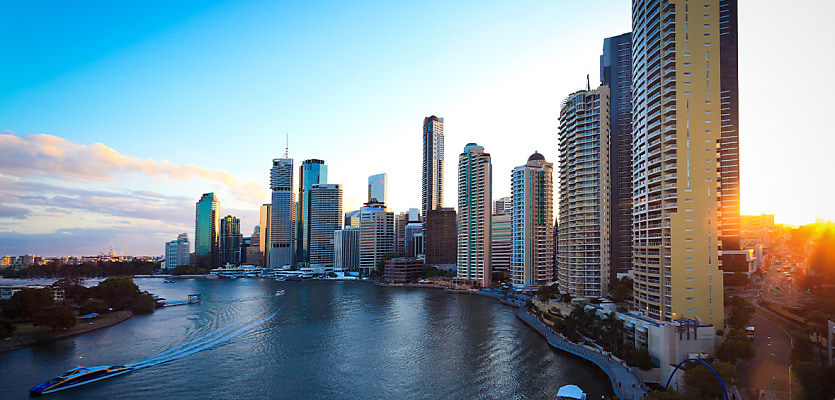Brisbane has realised a median home value of $1 million, following high levels of population growth and strong demand. However, experts have warned that affordability challenges could soon slow the city’s price growth.
Recent findings from Cotality have revealed that median house values across Brisbane increased to $1,006,000 in May of this year, pushing the Queensland capital into the million-dollar club for the first time.
Cotality’s data showed that Brisbane’s median house value lifted further to $1,011,000 over June, positioning the city as the second-highest ranked city after fellow million-dollar market, Sydney.
Brisbane’s growth in June also marked the ninth consecutive month the market was the second-highest capital city by median house value, after overtaking Canberra’s median in October 2023, and Melbourne’s in June 2023.
While the difference between Brisbane and Sydney’s median house prices is currently a near-record high of $549,000, Cotality said the gap has still reduced from the peak of $567,000 in October last year.
Nevertheless, data showed that Brisbane’s median house values are roughly $30,000 higher than the next-ranked Canberra market, and sit at a near-record high of $63,000 above Melbourne’s median.
Cotality’s head of research, Eliza Owen, said Brisbane’s current growth trajectory has come about due to a variety of favourable market conditions over the past five years.
“Prior to 2020, the Brisbane market had experienced a long-term period of softer growth conditions – setting the market up for a more affordable starting point when the COVID housing boom arrived,” Owen said.
She added that Brisbane’s rapid value growth has been further bolstered by the city’s unique draws, and relative affordability compared to the other capitals.
“As well as initially being more affordable than Melbourne, and remaining more affordable than Sydney, Brisbane’s weather and lower housing density may have presented more ‘lifestyle’ appeal during the pandemic,” Owen said.
Owen also linked Brisbane’s value growth to the high rates of interstate migration that intensified demand for housing in the market.
“Between June 2024 and June 2020, Greater Brisbane’s population grew by a substantial 9.2 per cent of an additional 235,000 people. This compares to a national population growth rate of 6 per cent in the same period,” she said.
“Assuming an average household size of 2.5 people, this suggests additional dwelling demand of about 94,000 in Brisbane over the four-year period from population growth alone.”
Owen estimated that Brisbane completed around 88,000 dwellings over the four years to June 2024, and said the shortages relative to demand ignited the current wave of median value growth across the city.
“The rapid boost to population growth at a time of constraints on housing supply is likely what led to a substantial boost in values – and urgency – in the housing market,” she said.
While heightened rates of overseas migration have been observed across the nation, Owen said Queensland has welcomed a large number of domestic arrivals from the southern states and recorded fewer departures from the Sunshine State.
“This shift in population has accompanied a virtuous cycle for the Queensland economy, which has generally outperformed in terms of job growth and state final demand,” Owen said.
Despite the solid performance of the Brisbane market, Owen said the recent value growth has begun to erode the city’s affordability, and could potentially dampen the market’s appeal to interstate movers.
Diminishing levels of affordability have already affected Brisbane’s value growth, with the city’s 1.9 per cent growth over the June 2025 quarter marking a decline from 3.5 per cent in the June 2024 quarter, and the high of 10.2 per cent in the three months to November 2021.
Even with the slowing in Brisbane’s pace of value growth, industry experts have remained resolute about the market’s long-term prospects, due to the potential growth opportunities around the Brisbane 2032 Olympic and Paralympic Games.







You are not authorised to post comments.
Comments will undergo moderation before they get published.